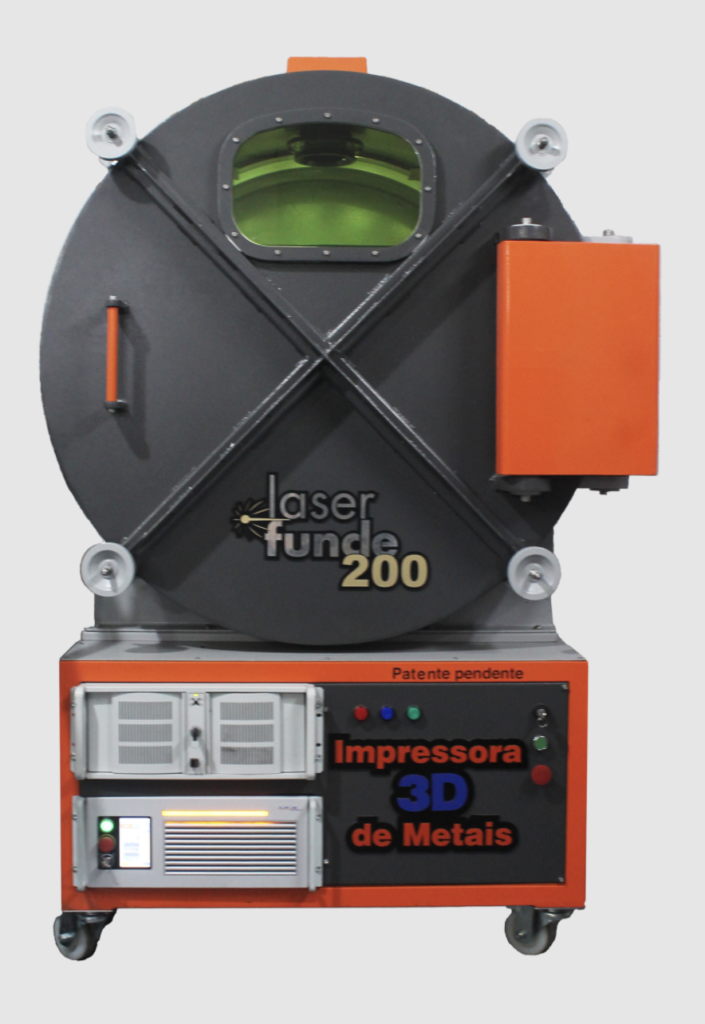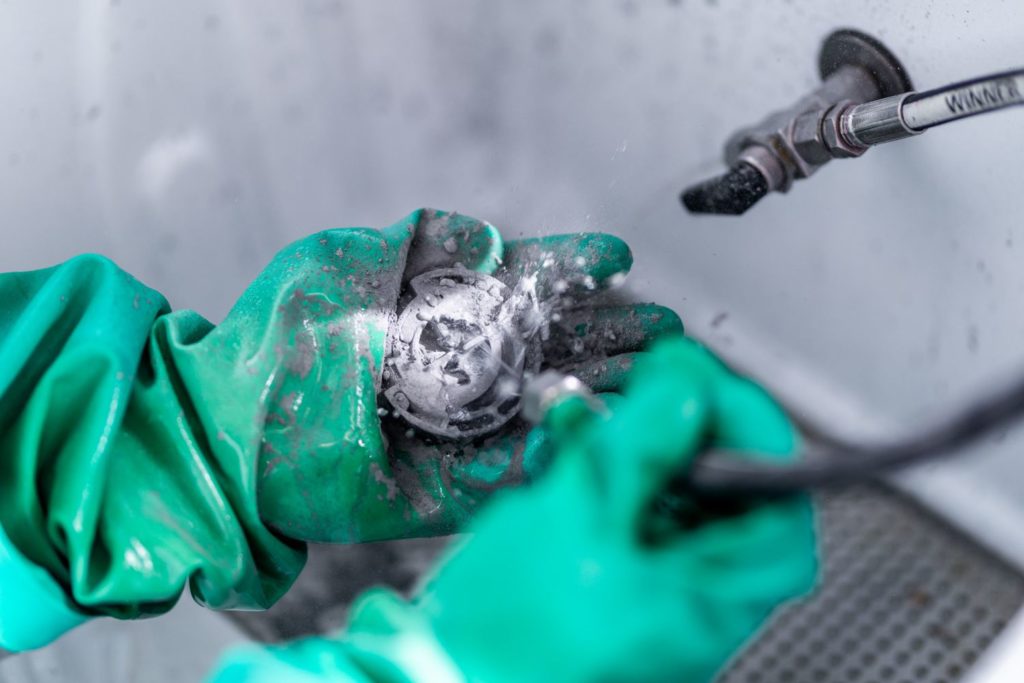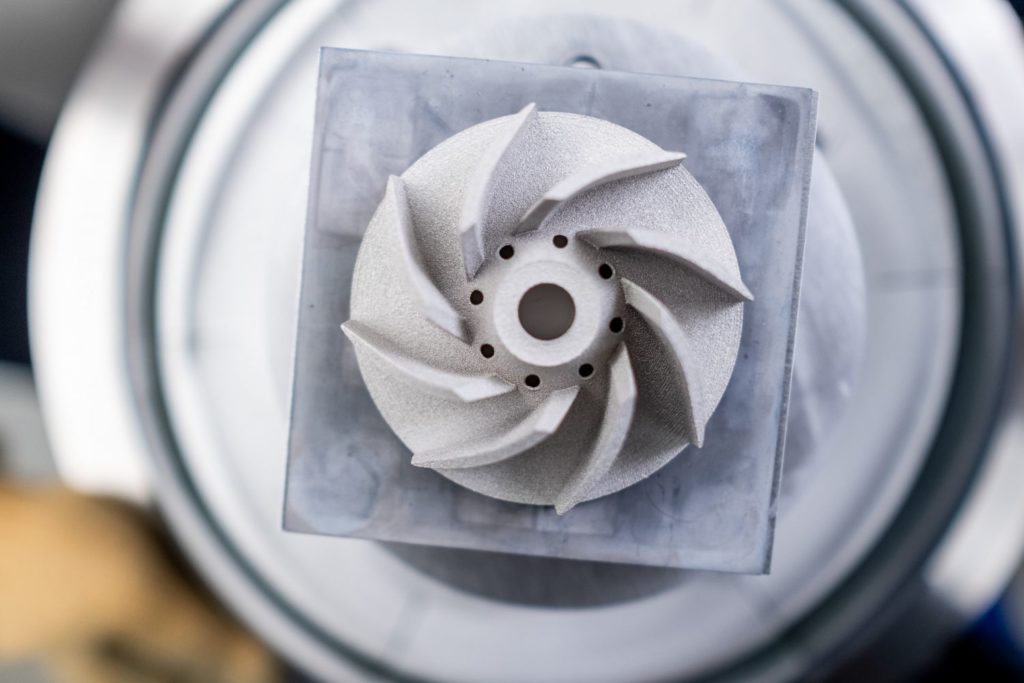A quiet revolution in low-cost metal printing is building and growing, mostly hidden from view. Previously we outlined what typified these companies and we had a look at a number of the players in this market. Now, thanks in part to the readers that reached out to me, I’ll add some more firms that are also working on low-cost metal machines. If you know any more, please do tell me via Joris (at) 3dprint.com.
Alkimat

Alkimat is a Brazilian metal 3D printing company that has a machine with a cylindrical build. Interestingly, the cylinder is horizontal and, inside that cylinder is another cylindrical build platform that is vertical. It operates similar to the Trumpf laser powder bed fusion machines and can print 316L stainless steel, aluminum, titanium, copper, brass, Inconel, some ceramics and polymers. Being able to print polymers such as polyamide on the same machine as metals is unique. The focus is on 316L, aluminum and Inconel 718.

Alkimat’s cylindrical build chamber, cylindrical build platform center, and the recoater arm.
The machine, the Laser Funde 200, has open parameters and allows users to change and have access to all of the necessary settings. The relevant machine parameters can be updated and changed to make it easier to dial in, add your own materials, or qualify new materials. In this regard, this is a setup very similar to what Open Additive and Freemelt offer.
Headmade Materials

Headmade uses selective laser sintering (SLS), or powder bed fusion, of polymers to make metal parts. A metal polymer matrix powder is shaped and sintered in the machine. The polymer melts away, leaving a green metal component which can then be sintered and debound in a furnace. Moreover, unused materials can be recycled for new builds.
Headmade is doing what BASF Ultrafuse does for Material Extrusion. The fun bit: the company claims uniform shrinkage at 16% which would make its process much easier to predict than other MIM, binder jet and bound metal technologies. I’m confused as to why they haven’t been bought yet by either BASF or EOS. The company now works with Tungsten, Stellite, 316L and Titanium 6Al4V.

This process is ingenious and could potentially mean that a lot of polymer systems could produce metal parts. This would make metal much more accessible to an installed base of tens of thousands of highly productive SLS systems. It would also be exciting to be able to process metal parts on a Sinterit Lisa or the Formlabs Fuse1, turning those super affordable systems into providers of metal parts. If Headmade makes this work well, it could radically change our industry.
Incus
No, Incus is not a PR agency that managed to diversify into 3D printing itself. Incus is a company that an affordable series of machines dubbed Hammer. The most affordable is the Hammer Lab35, which uses lithography metal manufacturing (LMM) developed at ETH Zurich.

The process is similar to the 3D printing processes Lithoz uses for ceramics and, indeed, the companies cooperate. A combination of vat polymerization and metal powder makes a green part which is subsequently debound. Similar to Admatec, HoloAM, and others, this means that they could feasibly produce large series with good definition, accuracy, and surface quality. Densities of up to 99% could be possible and the company is working on several materials, including 316L.

This will be an interesting technology especially for small parts that need to be smooth on interior areas or highly accurate, while being cost effective. The low-cost Lab35 means that universities, materials companies, and manufacturing firms now have a very affordable way to experiment with the technology. The company aims to launch a production system next year.
Meta Additive
Meta Additive is a binder jet company that uses its own binders. Their idea is that new proprietary binders will reduce shrinkage, warpage, and enable them to increase the speeds of builds. The firm hopes to reduce shrinkage rates to two percent. Meta Additive binders are filled with molecular ink, nanoparticles, and micro particles. The company hopes that its formulations will enable it to eventually skip the debinding steps and go straight from the 3D printer to heat treatment. This would significantly reduce costs. Meta Additive is also aiming to perform multi-material binder jetting as well. The team is in the midst of researching and working together with Xaar and others to bring its technology to market.
Tritone

Tritone‘s ingenious 3D printing process claims to be able to make parts at a rate of 1600 cc/h using Ti64 titanium, stainless steels (316L 15-5 PH, 17-4 PH), tool steels ( M2, D2, H13, 4340), copper, and Inconel 718. A rotating build creates a wax mold, which is then filled by a slurry mixture of binder and metal powder. The resulting parts are debound and sintered.
The company promises 99% dense parts and a wider than usual part size of between 2mm and over 350mm. The firm’s Tritone Dominant machine has a build volume of 400 x 240 x 120 mm and can produce layer thicknesses between 40 and 200 microns. The system comes with software that allows you to manage all of the five build trays in the machine. Tritone’s technology is novel and, out of the gate, the company has a variety of materials while promising high productivity. The value proposition is interesting, but will they be the ones to make low-cost metal a reality?
Subscribe to Our Email Newsletter
Stay up-to-date on all the latest news from the 3D printing industry and receive information and offers from third party vendors.
You May Also Like
Precision at the Microscale: UK Researchers Advance Medical Devices with BMF’s 3D Printing Tech
University of Nottingham researchers are using Boston Micro Fabrication‘s (BMF) 3D printing technology to develop medical devices that improve compatibility with human tissue. Funded by a UK grant, this project...
3D Printing Webinar and Event Roundup: April 21, 2024
It’s another busy week of webinars and events, starting with Hannover Messe in Germany and continuing with Metalcasting Congress, Chinaplas, TechBlick’s Innovation Festival, and more. Stratasys continues its advanced training...
3D Printing Webinar and Event Roundup: March 17, 2024
It’s another busy week of webinars and events, including SALMED 2024 and AM Forum in Berlin. Stratasys continues its in-person training and is offering two webinars, ASTM is holding a...
3D Printed Micro Antenna is 15% Smaller and 6X Lighter
Horizon Microtechnologies has achieved success in creating a high-frequency D-Band horn antenna through micro 3D printing. However, this achievement did not rely solely on 3D printing; it involved a combination...





























